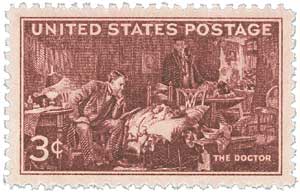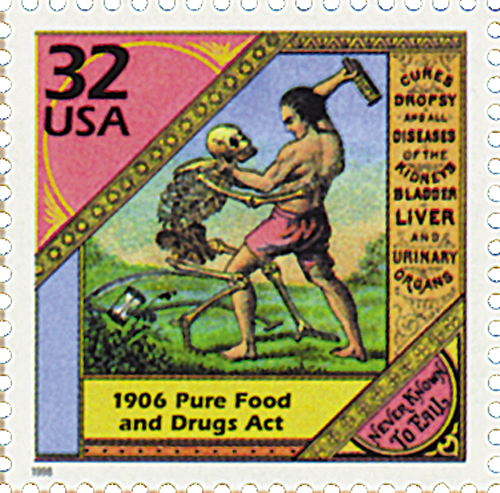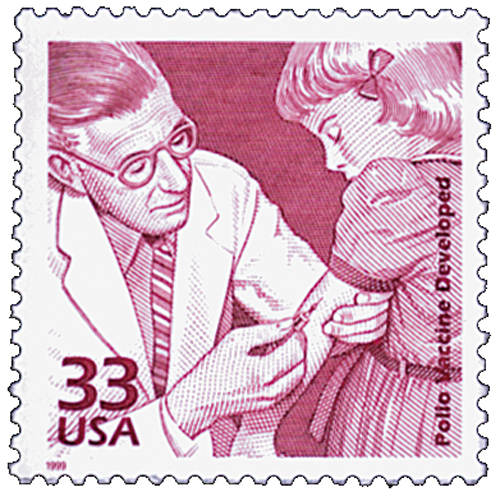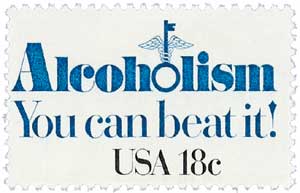
# 949 - 1947 3c The Doctor
3¢ Doctors
City: Atlantic City, NJ
Quantity: 132,902,000
Printed by: Bureau of Engraving and Printing
Printing Method: Rotary Press
Perforations: 11 x 10 1/2
Color: Brown violet
The American Medical Association

On May 7, 1847, the American Medical Association (AMA) was founded, thanks in large part to Nathan Smith Davis.
Born in a log cabin in Chenango County, New York, Davis (1817-1904) had just six months of higher education before beginning his medical apprenticeship in 1834. After graduating three years later, he worked in general practices in Vienna, and Binghamton, New York.

One of Davis’ major goals was to improve the quality and length of medical education in America. After being elected to the New York Medical Society in 1844, he created a resolution that suggested creating a national medical association to “elevate… the standard of medical education in the United States.” Although he wasn’t the first to have this idea, he was the first to find success.

On May 7, 1847, more than 250 doctors from over 540 medical societies and 28 colleges met at the Great Hall of the Academy of Natural Sciences in Philadelphia. They came together over shared concerns about reforms to medical education, ethics, and public health. During their meeting, they formed the American Medical Association to address these and other concerns.

Among the early accomplishments of the AMA was the establishment of the Committee on Medical Education, which established standards for medical education. The AMA also adopted the first national code of American medical ethics. Composed by Dr. John Bell and Dr. Isaac Hays, the Code of Medical Ethics set guidelines for doctors in respect to their patients, society, and other doctors.
In the years to come, the AMA helped to expose unethical practices and fraud. The AMA first produced its Journal of the American Medical Association in 1883, with Nathan Davis as its first editor. By 1901, the journal had a circulation of over 22,000, making it the most widely distributed medical journal in the world.
The AMA had long worked to educate the public on the dangers of patent medicines and called for legislation regulating their production and sale. Their efforts helped lead to the passage of the Pure Food and Drug Act of 1906. In the 1920s, the AMA set standards for specialty training and created a list of hospitals approved for residency training. In 1956, the AMA declared alcoholism to be an illness, they recommended polio vaccinations in 1960, and published a report on the dangers of smoking in 1964.

In the 1960s, the AMA formed the American Medical Political Action Committee to promote healthcare legislation. During the Vietnam War, the AMA promoted the Volunteer Physicians in Vietnam program. In the 1980s, they passed a resolution opposing discrimination against AIDS patients and in the 1990s, they supported the Patient’s Bill of Rights.
Today, the AMA has over 240,000 members with the stated mission “to promote the art and science of medicine and the betterment of public health.”
Click here for more from the AMA’s website.
3¢ Doctors
City: Atlantic City, NJ
Quantity: 132,902,000
Printed by: Bureau of Engraving and Printing
Printing Method: Rotary Press
Perforations: 11 x 10 1/2
Color: Brown violet
The American Medical Association

On May 7, 1847, the American Medical Association (AMA) was founded, thanks in large part to Nathan Smith Davis.
Born in a log cabin in Chenango County, New York, Davis (1817-1904) had just six months of higher education before beginning his medical apprenticeship in 1834. After graduating three years later, he worked in general practices in Vienna, and Binghamton, New York.

One of Davis’ major goals was to improve the quality and length of medical education in America. After being elected to the New York Medical Society in 1844, he created a resolution that suggested creating a national medical association to “elevate… the standard of medical education in the United States.” Although he wasn’t the first to have this idea, he was the first to find success.

On May 7, 1847, more than 250 doctors from over 540 medical societies and 28 colleges met at the Great Hall of the Academy of Natural Sciences in Philadelphia. They came together over shared concerns about reforms to medical education, ethics, and public health. During their meeting, they formed the American Medical Association to address these and other concerns.

Among the early accomplishments of the AMA was the establishment of the Committee on Medical Education, which established standards for medical education. The AMA also adopted the first national code of American medical ethics. Composed by Dr. John Bell and Dr. Isaac Hays, the Code of Medical Ethics set guidelines for doctors in respect to their patients, society, and other doctors.
In the years to come, the AMA helped to expose unethical practices and fraud. The AMA first produced its Journal of the American Medical Association in 1883, with Nathan Davis as its first editor. By 1901, the journal had a circulation of over 22,000, making it the most widely distributed medical journal in the world.
The AMA had long worked to educate the public on the dangers of patent medicines and called for legislation regulating their production and sale. Their efforts helped lead to the passage of the Pure Food and Drug Act of 1906. In the 1920s, the AMA set standards for specialty training and created a list of hospitals approved for residency training. In 1956, the AMA declared alcoholism to be an illness, they recommended polio vaccinations in 1960, and published a report on the dangers of smoking in 1964.

In the 1960s, the AMA formed the American Medical Political Action Committee to promote healthcare legislation. During the Vietnam War, the AMA promoted the Volunteer Physicians in Vietnam program. In the 1980s, they passed a resolution opposing discrimination against AIDS patients and in the 1990s, they supported the Patient’s Bill of Rights.
Today, the AMA has over 240,000 members with the stated mission “to promote the art and science of medicine and the betterment of public health.”
Click here for more from the AMA’s website.








